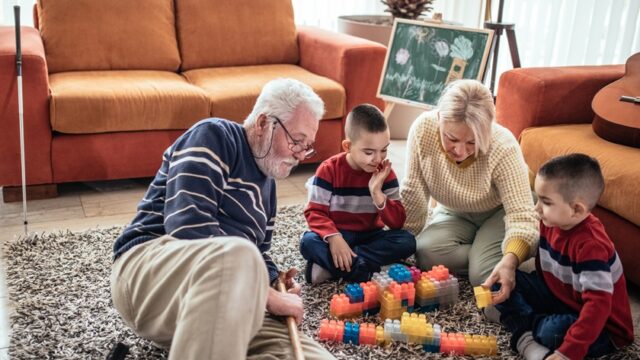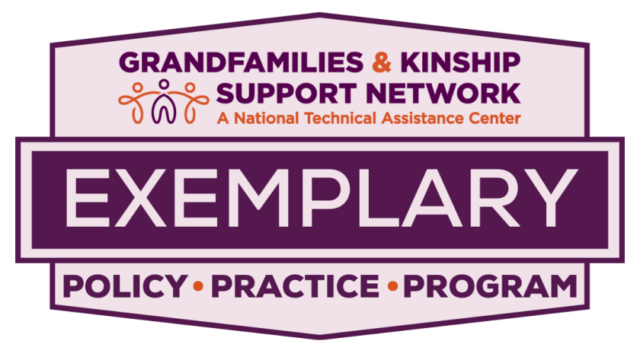Resource Library
Tip Sheet
We know grandfamilies are out there. How do we find them?
Download This Resource
A Network Monthly Resource: September 2023
Grandfamilies outside the foster care system often describe feeling alone, with nowhere to turn when grandchildren or other kin come into their care. This can be frustrating, because we’re out here with resources to offer. Here are ideas for connecting with families who need those resources.
- Watch your language.
- “Grandfamilies” and “kinship families” are terms that we use interchangeably, but families are often unfamiliar with them and may not identify with them. Use plain, inclusive language in recruitment materials: “Are you raising your grandchild or other relative or family friend?”
- Identify barriers and offer a low-stress entry point.
- Kin caregivers often feel judged by others, and they may be afraid that asking for help will lead to the kids’ removal from their homes.
- It may be useful to reach out with an offer of connection, rather than “help.” Consider framing your offerings as a source of broad support—a story hour, a school supply fair, a meal or other celebration. Offer additional supports like child care or transportation to make it possible for them to gather: “Raising grandkids or other kin? Meet up with others at [date, time, and location]. Coffee, doughnuts, and child care provided.”
- Go where grandfamilies might be.
- Ask the grandparents and kin caregivers who are currently connected to your organization where they recommend recruiting families. Often they’ll have ideas and suggestions that may not have occurred to you. Ask them to refer someone they may have met in the park. Give them business cards to promote your programs.
- Create outreach materials for places grandfamilies most likely visit with the children in their care, like pediatricians’ offices, federally qualified health centers, dentists, and counseling centers. Meet with staff to inform them about the services you offer and ask how they can help with promotion.
- Connect with local child care programs, like Head Start and Early Head Start. Many times these programs know who might benefit from your services.
- Your local school’s guidance counselor can be a great resource to spread the word and make connections to other staff and grandfamilies. You may also be able to have a table at events like Back to School Night that will connect you with many families in one setting.
- Post fliers in places family visit routinely, like grocery stores and laundromats.
- Organizations that offer youth programs where kin caregivers may frequently be present, such as the YMCA or Boys & Girls Clubs, offer opportunities to promote programs, both through fliers and staff recommendations.
- Partner with organizations already serving grandfamilies, like family court; local WIC, TANF, and SNAP offices; family resource centers; and food pantries. Ask them to make a referral to you with a warm handoff such as a referral form, email introduction, or video call.
- Consider using social media to promote or advertise your programs. You can identify the audience characteristics for your online advertisement, including: age, income level, education, location, or behavior (such as an interest in grandparenting). Search Facebook groups for your community and ask moderators if you can join and post information there about your programs and offerings. Promote your programs to other organizations on LinkedIn.
- Make sure you’re listed with 2-1-1, the most comprehensive source of information about local resources and services in the country. If your community lists local resources on its website and/or in a prominent location, such as the county courthouse, make sure you’re there as well.
- Connect with trusted faith-based and community-based organizations that celebrate cultures within your larger community, such as a Saturday Chinese School for Children or a group offering Latin American music and arts programming.
- Build relationships with organizations that serve older adults, such as Area Agencies on Aging and senior centers. Advertise your events and programs in their resource listings.
- Be present at important community events—like local celebrations, parades, markets, and information fairs. Host an information table and share details on upcoming programming.
- Co-create the programming that grandfamilies and kin caregivers want.
- Seek the help of grandfamilies in creating programming that will meet their needs and address the gaps in services/resources that they’ve experienced. Consider launching a grandfamily advisory group to engage the lived expertise of the grandfamily and kin caregivers. These groups provide your key stakeholders with a structured means to contribute to decision-making and resource/program development.
- Encourage advisors’ participation as ambassadors in reaching other grandfamilies.

